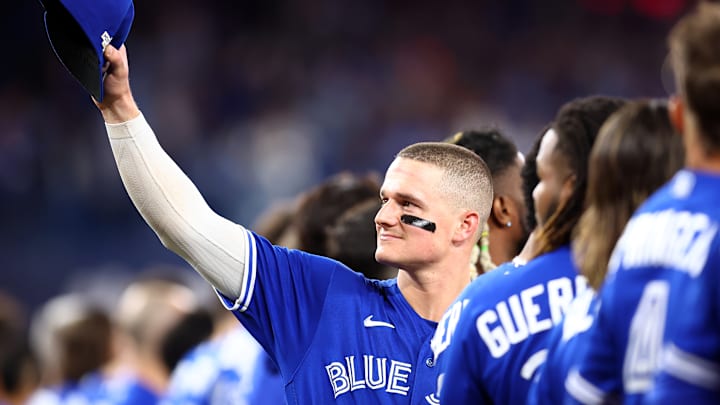Projected 2024 Luxury Tax Payroll
With 16 arbitration-eligible players in 2024 on the Blue Jays current 40-man roster, including ace Alek Manoah, who should reach ‘Super Two’ status after next season, as well as All-Star catcher Alejandro Kirk in his first year of eligibility, they will again face significant payroll headwinds just from salaries for these players.
That number will surely be higher than the expected $45.6M in 2023 with Manoah and Kirk eligible, as well as another year of experience for the young core. The arbitration-eligible number would also change if non-core players are traded or cut from the 40-man roster.
However, Ryu’s $20M Average Annual Value (AAV) contract will drop off, as will Chapman’s $12.5M, Keirmaier’s $9M , Merrifield’s $8.8M salary for luxury tax purposes in 2023, plus the $5.5M for García and $3M for Bass. The $4.33M retained salary for Randal Grichuk in 2023 also drops off.
That assumes they don’t exercise the $18M mutual option for Merrifield, or the $5M club option on García, although that option converts to a $6M guarantee with a combined 110 innings or 110 games cumulative across 2022-23; García pitched 61 innings over 61 games in 2022, so would only need 49 innings pitched or 49 games in 2023 for his option to vest for 2024.
With the CBT (luxury tax) threshold set to rise ~$4M to $237M in the 2024 season, plus the above 2023 salaries removed from the 2024 payroll calculation, the Blue Jays should have ~$67M under the threshold to resign Chapman, pay the $6M guarantee on García's vested option for 2024, and pay the year-over-year salary increases for arbitration eligible players.
Note that does not assume trades, DFAs or new free agent signings, nor does it include any longer term extensions to buy out the arbitration years for young stars like Vladimir Guerrero Jr., Bo Bichette, Alek Manoah, Daulton Varsho, Alejandro Kirk, Danny Jansen or Jordan Romano.
Extensions for any of those players could cost anywhere from $80-120M AAV in active player payroll. That would take them above the $237M CBT threshold to the $250~290M range, triggering the luxury tax of 20% on all overages (or 30% if it was over for a second consecutive year), plus a 12% surcharge on overages $20-40M above $237M, or 42.5% above $277M.
